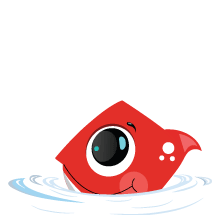More Than Strokes: How Playful Learning Makes Kids Love to Learn to Swim
- Bryan Yap
- Apr 17, 2024
- 4 min read

Unfortunately, far too often, swim schools and swim lessons ignore the developmental requirements of young children in favour of frustratingly practicing flawless swim strokes. It seems like they're attempting to educate a crawling child to run before they're ready!
We need an in-depth familiarity with children's inner workings, including their physical limitations, cognitive capacities, and social and learning styles. For young kids, learning to swim goes far beyond emulating the freestyle, backstroke, breaststroke, and butterfly. Forget the pressure of picture-perfect strokes! Our primary goal in a supervised setting, such as the learner pool at Finns BSC, is to build a love for the water and a solid foundation of freedom of movement for young children. We do it with a research-driven and evidence-based approach to teaching. This unlocks a lifetime of water enjoyment and safety.
Why prioritise foundational skills? Because a child's brain reacts differently in water, it's a new sensory world, triggering a natural "fight-or-flight" response. Studies have demonstrated that the sensory experience of being in water can evoke heightened physiological and emotional responses in young children. This suggests that prioritising foundational skills and creating a supportive environment for learning to swim is crucial in mitigating children's fear responses and promoting positive experiences in the water. By creating a fun and exploratory space within the pool, we calm those young minds, allowing them to process information effectively.
Now, this positive environment is the key to their cognitive and social development. What better way to spark this love for the water than to allow them to discover their own freedom of movement? Children who are encouraged to explore and play in water environments exhibit improved cognitive abilities, such as problem-solving skills and spatial awareness, as well as enhanced social skills, including cooperation and communication. That is why we don't usually teach directly in our swimming classes. Most of the time, you will see us encouraging them to experiment and play with "flying" through the water like airplanes, floating like happy hippos, and erupting in giggles as they bob on the surface. These self-discovered movements become the building blocks for later, more refined strokes. It's a language of movement they develop on their own terms, fostering a sense of accomplishment and a deep connection to the water.
As comfort builds, water safety skills blossom naturally. Breath control and manoeuvring are second nature. And the best part? With a strong foundation, learning formal strokes in a swimming class becomes easy. They'll grasp the technique because they already understand buoyancy and movement. No more frustration, just pure enjoyment and water safety awareness!
So, how do we ignite this love for the water in a controlled environment? Here's where the fun truly begins! Pool toys, diving rings, and games become our tools to spark exploration. Singing songs and telling imaginary stories about swimming movements add another layer of fun and engagement. Keep in mind that we value effort and happiness more than flawless technique; we're all about making a splash and giggling with delight. Jumping in with your child and getting a little goofy together creates a supportive environment that fosters social interaction and communication for continued participation and anticipation, ensuring that learning will not come to an end.

Our swim classes are play-centred. We spend most of our time (around 90%) on these playful activities and explorations. Research suggests, play-based learning promotes skill development across multiple domains during a child's growth. Therefore, the remaining 5–10% is dedicated to summarising and assessing what they've learned through play throughout the session. This way, we can ensure they're not only having fun but also retaining valuable skills and building confidence in the water.
Of course, some eager kids might show an early interest in strokes. Allow them to learn; don't limit what they can achieve! But safety and enjoyment remain paramount. Our qualified swim teacher can assess their readiness and introduce strokes in a way that's fun, engaging, and builds upon their existing skills. The right teaching methods cultivate the right learning behavior. This translates to a newfound freedom of movement in the water and a sense of accomplishment that builds confidence. They'll be surprised and receptive to future swimming instruction, be it mastering strokes or advanced skills.
As one swimming masterclass guru once told me, "Practice does not make perfect; only perfect practice makes perfect." We're not just teaching them to swim by prioritising fun and foundational skills; we're cultivating a lifetime of water enjoyment and safety. Strokes will come naturally in due time. But the key to perfect practice is developing the right learning behaviours and effective teaching methods based on research. We want them to explore, experiment, and find joy in their newfound passion for the water. That's the foundation for a lifetime of aquatic adventures!
Now, remember this: with the right approach, we can nurture not just competent swimmers but champions in the making. By fostering a love for learning and a positive attitude towards freedom of movement in the water, we're laying the groundwork for future stars. These children, with their strong minds and foundations, will approach future swimming challenges with confidence and a willingness to learn for the love of being in the water. They'll be the ones who embrace perfect practice, constantly striving to improve.

























